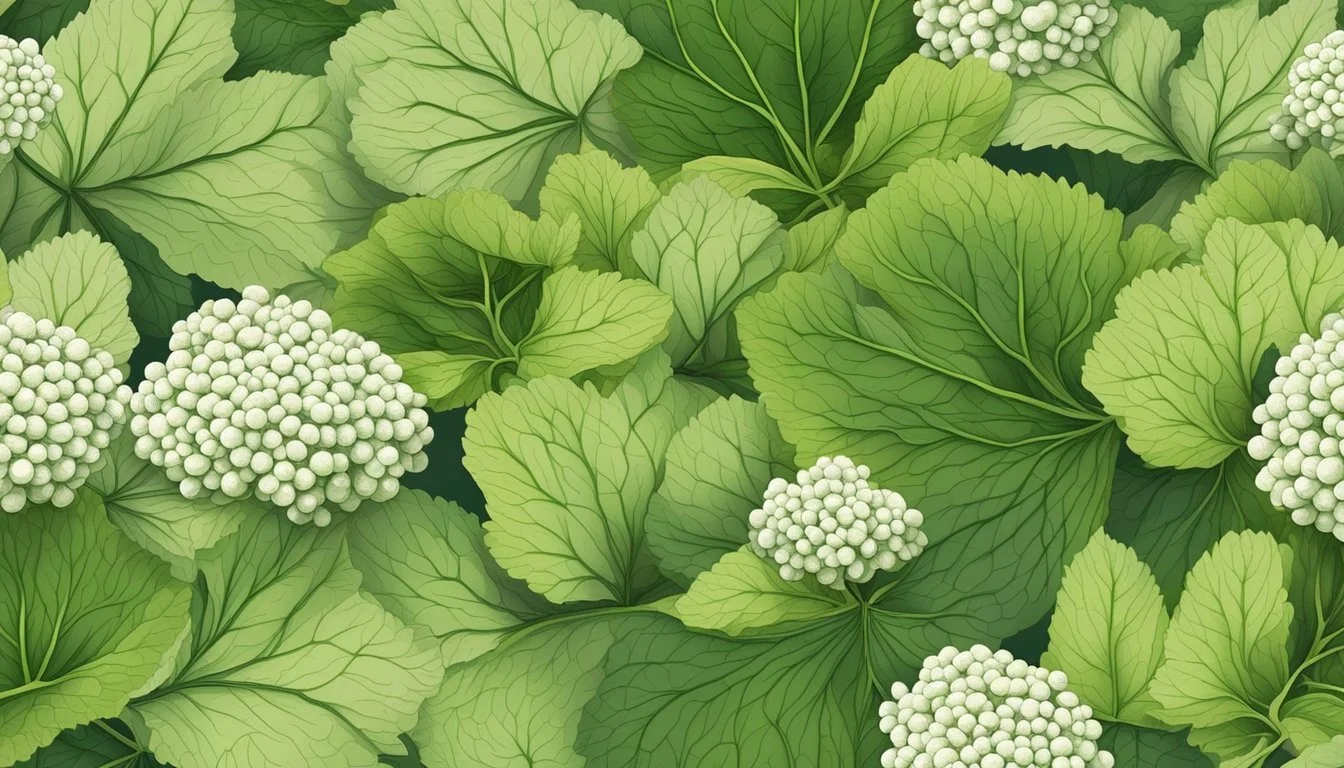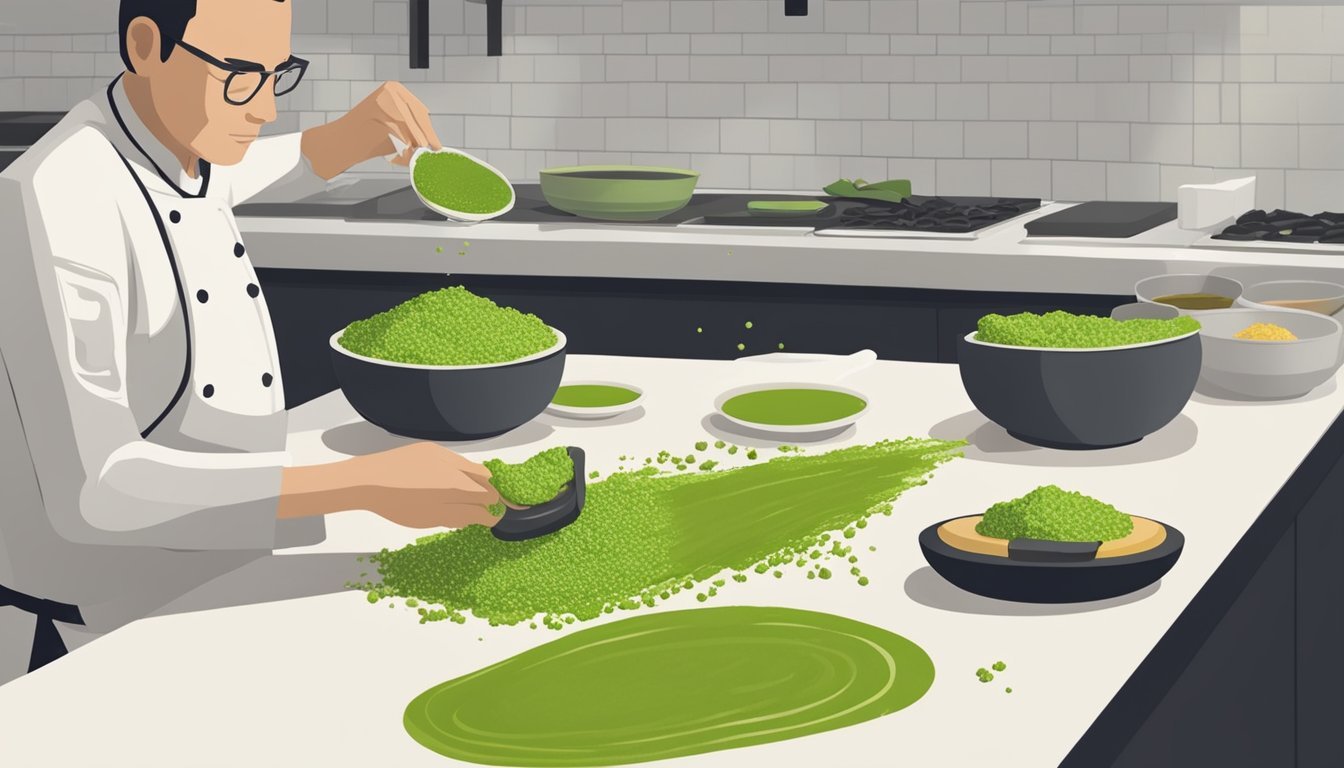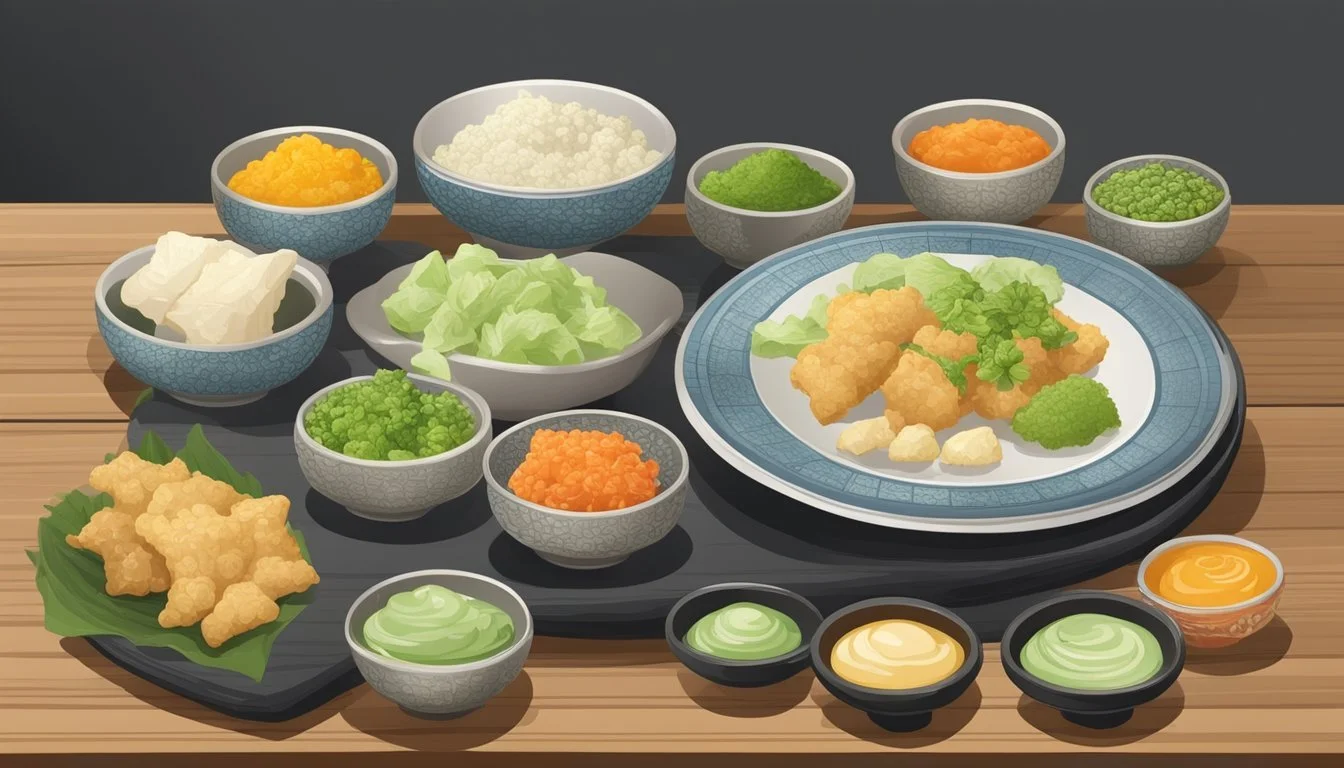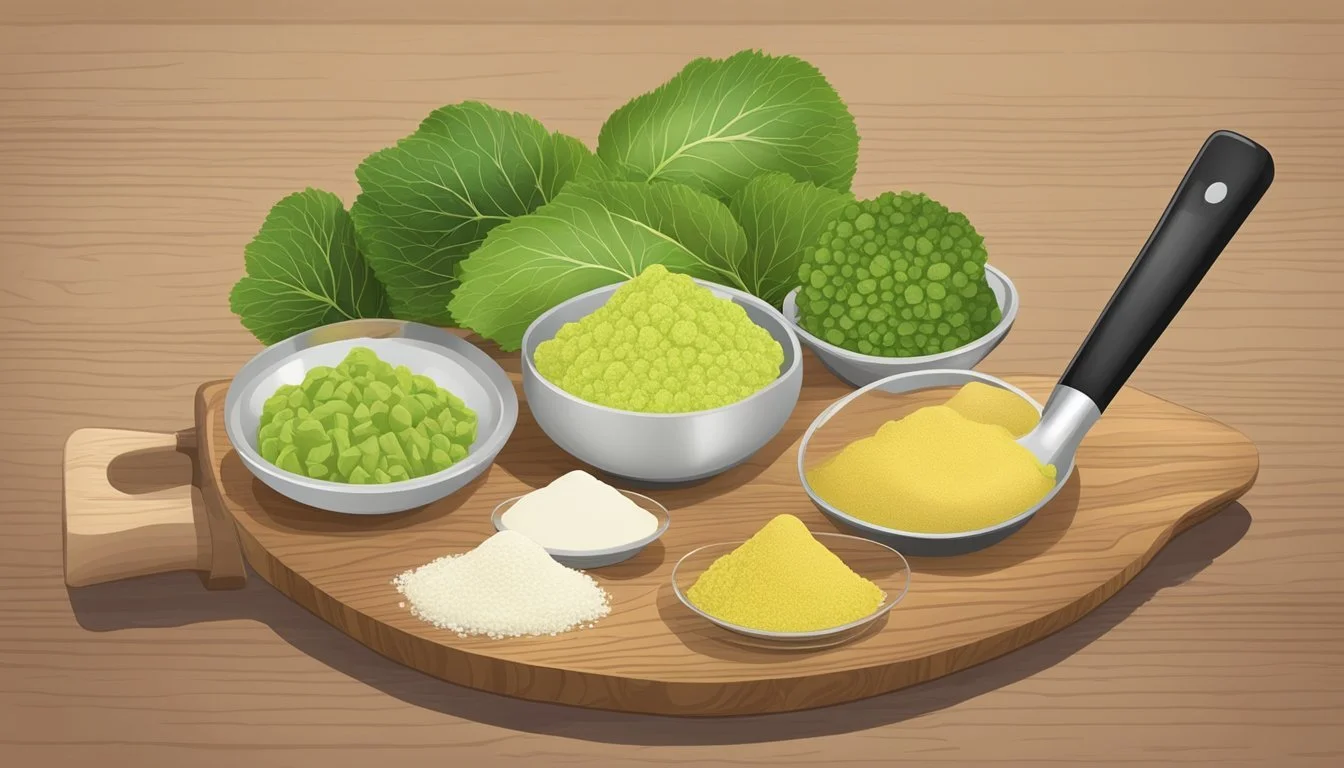Wasabi Substitutes
Best Alternatives for Your Dishes
Wasabi, an essential component in Japanese cuisine, is notorious for its distinct, pungent flavor that elevates dishes like sashimi and sushi. Finding a substitute for wasabi can be challenging due to its unique heat and aroma, but several readily available alternatives can mimic its flavor profile effectively.
One of the best substitutes is horseradish, which shares a similar spicy kick and intensity. Other viable options include spicy brown mustard, offering a close taste profile, and English mustard, known for its sharpness. For those seeking a more exotic twist, umeboshi paste or karashi can also bring a comparable zest to your dishes.
Experimenting with these substitutes can help you achieve the desired wasabi-like experience without the difficulty and expense of sourcing real wasabi. Indulge in the piquant flavors of Japanese cuisine with these accessible and flavorful alternatives.
Understanding Wasabi
Wasabi is a central ingredient in Japanese cuisine, renowned for its unique and pungent flavor. It's commonly paired with sushi and sashimi for its distinctive heat and depth, but there's much more to know about this iconic condiment, including the differences between true wasabi and fake wasabi.
Origins and Culinary Uses
Wasabi (Wasabia japonica) is derived from the root of a plant in the Brassicaceae family. Native to Japan, it flourishes in cool, mountain streams and requires specific growing conditions.
In culinary contexts, wasabi is prized for its sharp, zesty heat which dissipates quickly without leaving a lingering burn. It is integral to sushi and sashimi, providing not just flavor, but also antibacterial properties which can be beneficial when consuming raw fish.
True Wasabi vs. Fake Wasabi
True wasabi is made from the actual rhizome of the wasabi plant. It has a complex flavor profile that combines heat with a slightly sweet aftertaste. Genuine wasabi is usually available as a fresh root that is grated before use, or as a wasabi paste and wasabi powder.
Fake wasabi often contains a mixture of horseradish, mustard, and green food coloring to mimic the appearance and heat of true wasabi. It's much more common due to the high cost and limited availability of genuine wasabi. While horseradish provides a similar heat, it lacks the nuanced flavor profile of true wasabi.
In most settings outside Japan, the wasabi served is typically this imitation version.
The Flavor Profile of Wasabi
Wasabi, also known as Japanese horseradish, offers a unique combination of spicy pungency and fresh, vibrant flavor. This section explores the primary flavor components that contribute to wasabi's distinct profile and its impact on various dishes.
Key Flavor Components
The primary component responsible for wasabi's signature heat is allyl isothiocyanate. This compound is released when the rhizome of the wasabi plant is grated. The result is a sharp, pungent heat that clears the sinuses more than it burns the tongue, unlike chili peppers.
Another essential aspect is the aroma. Fresh wasabi has a bright, green, and herbaceous scent that complements its flavor. The combination of heat and refreshing aroma sets wasabi apart from similar condiments like horseradish or mustard.
The overall flavor consists of a delicate balance between sweet and spicy notes. The initial zing of spiciness gives way to a subtle sweetness, creating a multifaceted taste experience that enhances the flavors of sushi, sashimi, and other dishes.
Wasabi's Impact on Taste
Wasabi's pungent zing can elevate the taste of various foods by adding a burst of freshness and complexity. When used with sushi, it enhances the natural flavors of the fish and rice without overpowering them. The spicy heat from allyl isothiocyanate provides a quick, sharp kick that dissipates rapidly, unlike the lingering burn of chili peppers.
Additionally, wasabi's unique taste and aroma can help balance rich or fatty foods. Its sharp, clean zing acts as a palate cleanser, making it a popular accompaniment for oily fish like tuna and salmon. This quality makes wasabi a favored condiment in Japanese cuisine and beyond, appreciated for its ability to elevate and complement a wide range of dishes.
Common Wasabi Substitutes
When genuine wasabi is hard to find, several alternatives can replicate its unique spicy and pungent flavor. These substitutes vary in texture, flavor, and spiciness.
Horseradish as a Substitute
Horseradish is the most commonly used alternative to wasabi. It comes from the same plant family and shares a similar flavor profile, though it is often slightly less spicy. The texture of horseradish can also mimic fresh wasabi, especially when grated.
Horseradish can be easily found in grocery stores, both in raw root form and as a prepared sauce. It's particularly popular in Western cuisine and can be used in sushi, sashimi, and other dishes where a spicy kick is desired.
Mustard Varieties in Comparison
Several types of mustard can serve as adequate substitutes for wasabi. Spicy brown mustard and Asian Karashi mustard are two of the best options. Both have that sharp, spicy flavor reminiscent of wasabi.
Dijon mustard offers a milder, more balanced heat, making it a viable option for those who prefer a less intense substitute. Yellow mustard, while milder, can be used in a pinch but won't provide the same pungency. Mustard's smooth texture makes it easy to blend into various dishes.
Other Spicy Alternatives
Other spicy alternatives include Hot Daikon, Chili Peppers, and Yuzu Kosho. Hot Daikon, a type of radish, has a spicy-sweet flavor with a hint of sourness. It offers a crunchy texture, making it suitable for salads and garnishes.
Chili peppers can also bring heat but lack the distinctive wasabi flavor. Yuzu Kosho, a mix of chili peppers and yuzu citrus, provides a unique blend of heat and umami. These alternatives add both spice and character to dishes, offering a versatile range of flavors for creative cooking.
Culinary Applications of Wasabi Substitutes
Wasabi substitutes can be seamlessly integrated into various culinary applications, from sushi to salad dressings and marinades. They offer a range of flavors and textures, making them versatile in both Japanese and other cuisines.
Using Substitutes in Recipes
In recipes that typically call for wasabi, substitutes like horseradish, mustard, and even ginger can be used effectively. Horseradish is a popular choice due to its potency and heat, closely replicating that of real wasabi. Prepared horseradish is milder but still effective.
For dishes like sushi, a mixture of spicy brown mustard with a drop of green food dye can approximate the flavor and visual appeal of wasabi. Fresh ginger, peeled and grated, can add a sweet-spicy kick to sashimi, providing an alternative flavor profile. Different wasabi substitutes can be experimented with to find the ideal replacement for specific recipes.
Homemade Wasabi Paste Alternatives
Creating homemade wasabi paste alternatives involves blending ingredients to mimic the unique taste and texture of wasabi. A common method involves using fresh horseradish, which can be grated and mixed with various binders.
Mixing horseradish with a touch of mustard or ginger can enhance the heat and bring depth to the paste. Spicy brown mustard or Dijon mustard are ideal for this, adding both zest and a compatible texture.
For marinades and salad dressings, these wasabi substitutes can be integrated to provide a spicy element. Careful balancing of these ingredients ensures the final mixture is both flavorful and suitable for varied culinary applications, from traditional Japanese dishes to modern fusion cuisine.
Using fresh components and adjusting proportions can yield a satisfying homemade paste that closely mimics the real thing.
Sourcing and Selecting Substitutes
When looking for wasabi substitutes, understanding where to find them and how to choose the best options is crucial. The selection process takes into account availability, freshness, and shelf life.
Grocery Store Finds
Local grocery stores are often the most convenient source for wasabi substitutes. Popular options include horseradish and mustard, both of which are easily found in various forms such as fresh, prepared, or paste. Freshly grated horseradish root provides a potency similar to real wasabi. Spicy brown mustard also serves as a close substitute, offering a comparable heat and depth of flavor.
For those looking for convenience, prepared horseradish and spicy mustard in tubes or jars are readily available and affordable. Some specialty stores may also carry wasabi paste or powdered wasabi that, while not identical to fresh wasabi, still delivers a similar kick.
Considerations for Freshness and Shelf Life
Freshness is key when selecting a wasabi substitute. Fresh horseradish root has a strong, spicy flavor akin to wasabi and should be used promptly. It can be stored in the refrigerator, but its flavor diminishes over time. Mustard products, whether spicy brown or Dijon, also maintain better flavor when fresh.
Prepared substitutes like horseradish paste and spicy mustard in tubes generally have a longer shelf life. These can be stored for several months, making them a practical choice for those who don't use wasabi substitutes frequently. Always check expiration dates and store these products in cool, dry places to maintain their quality.
Incorporating these substitutes into your cooking will ensure your dishes retain the spicy kick and unique flavor profile characteristic of original wasabi.
Cultural and Regional Preferences
Wasabi and its substitutes are used differently across various cultures, influenced by taste preferences and culinary traditions. This section explores its use in traditional Japanese cuisine and its adaptations in Western cuisine.
Wasabi Use in Japanese Cuisine
In Japanese cuisine, wasabi plays an essential role, especially in dishes involving raw fish, like sushi and sashimi. Authentic wasabi, often referred to as Japanese horseradish, is prized for its bright, fresh heat and subtle sweetness that complements the umami of seafood.
Freshly grated wasabi is preferred in high-end sushi restaurants since it offers a more nuanced flavor compared to the commonly used imitation versions. The Japanese value the authentic plant's unique taste and texture, which enhances the delicate flavors of Japanese cuisine.
Diners in Japan often appreciate the swift, pungent heat of wasabi, which doesn’t linger as long on the palate, providing a clean finish that doesn't overpower the other ingredients.
Adaptations in Western Cuisine
In the United States and other Western cuisines, the approach to wasabi adapts to local tastes and available ingredients. Spicy mustard or horseradish is often used as substitutes, given the scarcity of authentic wasabi.
Western adaptations often mix these substitutes with green food dye to mimic the appearance of real wasabi. Restaurant reviews and food writing in Western countries highlight creative uses of wasabi or its substitutes in fusion dishes, such as wasabi-flavored sauces, snacks like wasabi peas, and even wasabi-infused dressings.
The focus is typically on providing a strong, bold flavor that appeals to taste preferences favoring intensity and heat, a notable difference from the more refined and restrained use seen in Japanese cuisine.
Expert Recommendations and Tips
For those looking to substitute wasabi in their dishes, culinary experts and product reviews provide valuable insights. Considerations include balancing flavor profiles and achieving the right consistency.
Professional Culinary Advice
Horseradish is often touted by chefs as the best alternative, closely mimicking real wasabi in both flavor and heat. Freshly grated horseradish is recommended due to its potent kick, although prepared horseradish can suffice. For added authenticity, a small amount of green food dye can replicate wasabi's typical appearance.
Spicy Mustard, like Dijon or spicy brown mustard, is another favored option. Professional cooks suggest combining it with a small amount of grated ginger to emulate wasabi's unique profile. This blend captures the essence of wasabi’s heat and slightly sweet undertone.
Product Reviews and Endorsements
Several products have gained popularity based on user feedback and expert endorsements. S&B Wasabi Powder is often highlighted for its quality and ease of use. It just needs to be mixed with water to form a paste, offering convenience without compromising flavor.
Eden Foods Wasabi Powder is another well-reviewed option. Though slightly pricier, it is praised for its authentic taste, thanks to the inclusion of both horseradish and real wasabi in its ingredients. Customers appreciate its balanced heat and depth, making it a strong contender for those seeking authenticity.
Both products maintain a good reputation for taste and reliability, making them go-to choices for those in need of a wasabi substitute.
Conclusion
Using alternatives to wasabi can enhance Japanese cuisine for those who lack access to fresh wasabi or prefer a different flavor profile.
Horseradish stands out as the closest substitute. It mirrors the heat and pungency of wasabi, making it a favorite among chefs.
Mustard also offers a spicy kick and can be adjusted with additional ingredients like horseradish and lemon juice to closely replicate wasabi flavors.
Ginger provides a milder heat and a different aromatic profile. It’s often used for its refreshing and slightly sweet qualities.
Green peppercorns and Hot Daikon offer unique flavors. Green peppercorns add a peppery zest, while Hot Daikon brings a spicy-sweet element.
Spicy brown mustard is another accessible substitute. It’s readily available and approximates the heat of wasabi well in many dishes.
Each substitute brings its own distinctiveness to the table, allowing for creativity and flexibility in culinary preparations.
Incorporating these substitutes can maintain the authentic essence of Japanese cuisine while exploring new tastes and textures.









